The Warehouse Revolution is Built on Relationships
BY AsphaltPro Staff
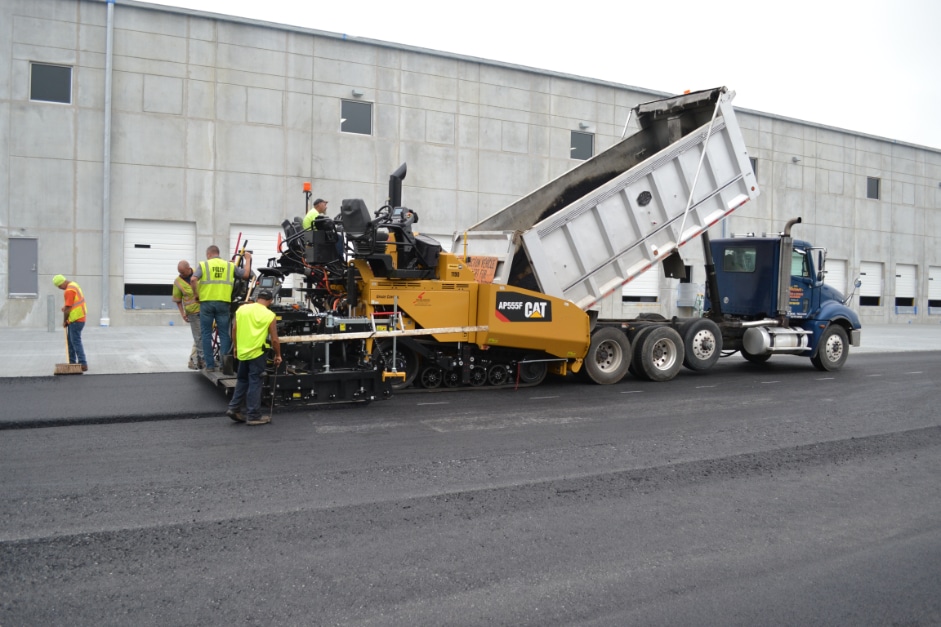
Warehouses account for around 40% of Schlouch Inc.’s book of work. But being a part of this warehouse revolution, Schlouch says, is still a relationship game.
For many of us, the days of face-to-face shopping are gone; we no longer have a close relationship with sales clerks or ask for their recommendations on our purchases. Many online shoppers have noticed algorithms now rule their recommendations; afterward, anonymous warehouse workers fulfill the orders. However, according to Schlouch Incorporated, Blandon, Pennsylvania, the construction of those warehouses is still a relationship game.
“Geographically, eastern Pennsylvania is in a sweet spot for warehouses,” said Glen Powell, Schlouch’s paving department coordinator and project manager. “This area is considered an inland port, with a lot of goods coming off of ships in the New York and Newark, New Jersey, areas coming into this region for warehousing.”
“Plus, this is prime real estate along the Interstate 78/81 corridor in this section of Pennsylvania to further distribute goods around the northeast,” added Schlouch Site Superintendent Derek Bainbridge.
Schlouch is a heavy civil site work contractor that employs 285 people. The company, founded in 1983 by Barry and Deborah Schlouch, performs heavy civil services ranging from excavation to utility installation, drilling and blasting, design build services, concrete work, and asphalt paving, with asphalt paving accounting for roughly one-fifth of the company’s annual sales.
Powell estimates warehouses account for around 40% of Schlouch’s work and its biggest market outside of residential subdivision work. “We’ve seen the warehouse market more than double in this region in the last five years,” Powell said, adding that it grew even more in the wake of the COVID-19 pandemic. Bainbridge estimates they do five or six warehouse jobs per year.
However, Schlouch has been involved in warehouse work since the 1990s. That history in the industry, and the relationships it’s cultivated over the years, is integral to the company’s success in this niche.
“We have a lot of repeat customers in the warehouse industry, since there’s a relatively small pool of players in that market,” Powell said. There are the Walmarts, Amazons, UPSs and FedExs, but also a small handful of warehouse developers, like Prologis and Northpoint, who build warehouses and lease them to the Walmarts, Amazons, UPSs and FedExs. “The companies are national in nature, but there aren’t many of them.”
“In this market, relationships are everything,” Bainbridge said.
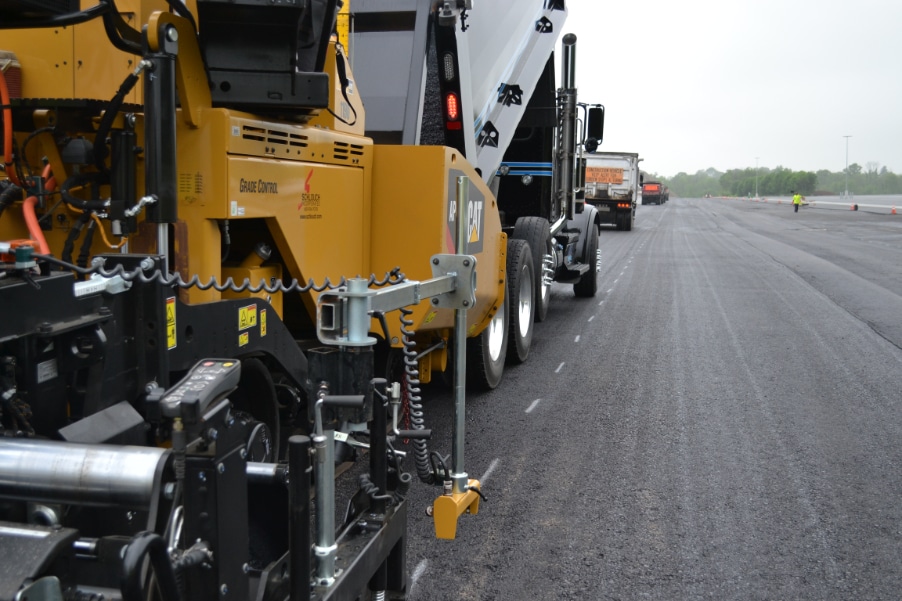
Powell stresses the importance of heated end gates to achieve quality joints. “Because of the size of these paving areas, you’re talking about thousands of feet of joints.”
Design-Built, Value-Engineered
“Since a lot of these companies are national players, they don’t necessarily have the intimate relationship with local governments, townships, the state DOT, inspectors and such that we do,” Powell said. “Our relationships with local entities help them through the construction process.”
Also important are the relationships Schlouch has with its warehouse clients, since they’re often working closely with the property owner and general contractor. “Design-build is big for larger warehouse projects,” Bainbridge said, adding that it’s a bit of a niche for Schlouch.
This also helps Schlouch value engineer potential alternatives for its clients. “Since we’re often doing design-build, we have a firsthand opportunity to provide the best value for the client,” Powell said. “With our warehouse projects, we may look at the materials specified and the pavement design and present value engineering to clients that could improve service life or give them the same service life while reducing upfront costs.”
Often, this is a result of changes in material. “Engineers are limited to what they know and their past experiences,” Bainbridge said, “whereas we have a broader horizon of understanding with materials and may be able to recommend alternatives that can be equal to or better than what was designed while also saving the customer money.”
For example, at a warehouse in Bethel, Schlouch was able to recommend the use of a geogrid between the soil and the aggregate subbase to reduce subbase thickness. “That gave them the same strength while saving a substantial amount of money,” Bainbridge said. Powell added that they were also able to reduce the paving cross section thickness by an inch or two, “which resulted in a sizable savings on a 40,000-square-yard job.”
On another job, the soil conditions weren’t great, so Schlouch recommended cement stabilization. “Through that process, we built more strength into the subgrade and were able to reduce 1 inch of paving thickness on the project while giving the client a job that would last them as long as the original design,” Powell said.
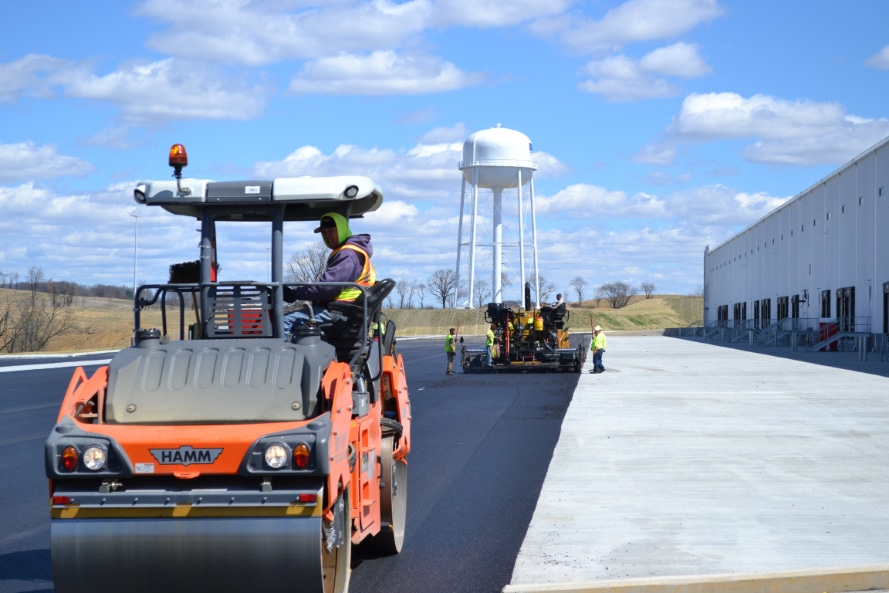
Where the asphalt ties into the many concrete aprons located around warehouse jobs is also important. “The rollers have to get right up to the edge of the concrete,” King said.
“I think that value engineering shows our investment in the project and our willingness to help the customer and the GC get the job done,” Bainbridge said. “We’re fully invested in the success of the project and are willing to come up with ideas to help them achieve their end goals.”
Schlouch also must have good working relationships with the other trades working on the project.
“Since these jobs are usually done under such tight timelines, we’re often coordinating with other trades working on the building itself,” said Paving Field Coordinator Rob King. “A higher level of coordination is required when you’re paving at a warehouse than if you’re shutting down one road. There’s a lot of internal traffic control and sequencing that has to take place.”
This is made a bit easier, because Schlouch can perform such a broad variety of work common on warehouse jobs. “We only have to rely on a small number of subcontractors on these types of jobs,” Powell said. “That means we can schedule and coordinate seamlessly and smoothly to perform in a tight time frame.”
Powell said proper planning and communication with the asphalt plant is also key. Demand for asphalt paving is high in Schlouch’s region of Pennsylvania, which makes planning ahead all the more important on the material side of things, Powell said, “especially given the quantities of material involved in warehouse jobs.”
Bainbridge estimates that the average warehouse job requires between 20,000 and 40,000 tons of asphalt. “If you wait until a couple days before a warehouse job to order that much material, you’re not going to be able to get the amount of material you need,” Powell added. “Advanced planning and scheduling with the selected supplier is paramount.”
Having a good relationship with the asphalt plant isn’t only important in terms of material quantity, but also material quality.
“If during laydown the crew placing the product sees any changes in the material, visually or in how it behaves, they need to be in constant contact with the material supplier,” Powell said. “It’s not uncommon to see issues throughout the day where the vendor will send a lab tech out to understand what’s going on. Having a good relationship with the vendor is important so they can support you if you start to see any quality issues.”
Materials Matter
Among the largest warehouse jobs Schlouch has ever performed is one the crew is currently paving at an industrial park in Hamburg, Pennsylvania. “We designed the entire industrial park from day one,” Bainbridge said, adding that they’ve been working on various phases of the park for around five years.
They’re currently working on the fourth building, a 1.2-million-square-foot warehouse, for which they’ll wrap up paving mid-summer.
“The biggest challenge on that job was the topography of the existing land,” Bainbridge said. “The topography wasn’t ideal for a warehouse at all because it was on the side of a giant hill we had to carve up to make it as flat as we could.”
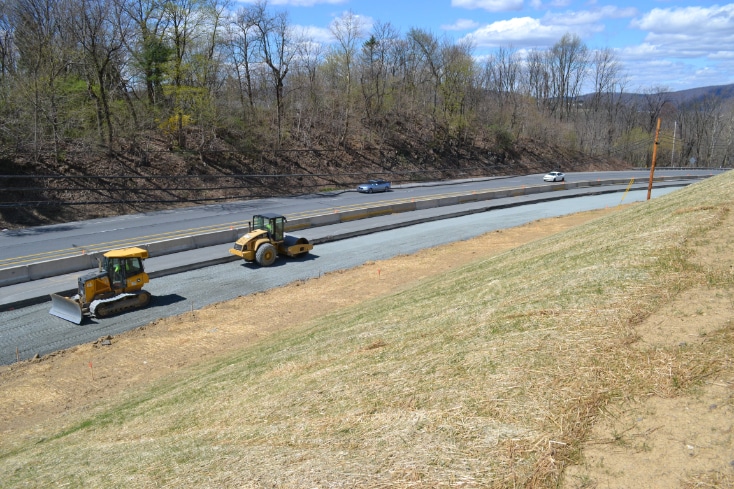
Improvements to existing roads might include widening to accommodate turn lanes, deceleration and acceleration lanes; reconstruction; and/or installation of traffic signals.
The job required extensive earthmoving, amounting to more than 800,000 cubic yards of material, as well as extensive blasting, storm sewer and underground utilities installation, curb paving, topsoil work, and 30,000 tons of asphalt paving.
The asphalt pavement at the industrial park in Hamburg had between 6 and 8 inches of 2A aggregate subbase in the light and heavy duty sections of the project, respectively. The light duty section was topped with 2.5 inches of binder course HMA and a 1.5-inch wearing course, while the heavy duty section was topped with 4 inches of base course HMA and a 1.5-inch wearing course, for a total of 30,000 tons of asphalt.
As part of the Hamburg project, Schlouch’s crews did some major improvements to PA Route 61, adding a half-mile of acceleration and deceleration lanes at the entrance to the industrial park.
Powell said it’s quite common for the state DOT to require improvements to the existing road network around the warehouse to accommodate the increased traffic.
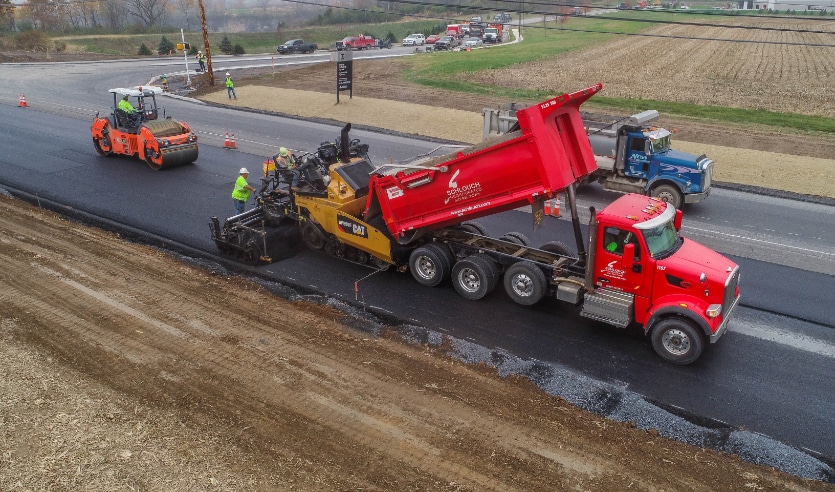
Powell said it’s quite common for the state DOT to require improvements to the existing road network around the warehouse to accommodate the increased traffic.
“With the increased truck traffic to the warehouse, the surrounding roads may need to be reconstructed or reconfigured for additional traffic,” he said. This might also include widening to accommodate turn lanes, deceleration and acceleration lanes; reconstruction; and/or installation of traffic signals.
To widen Route 61 near the Hamburg industrial park, Powell said the crews encountered some deposits of rock they were able to ultimately use as general fill on the job site. “It wasn’t suitable for our subbase, but it was structurally sound to help resolve the topographical issues,” he said.
“It’s common to come across rock on warehouse jobs that can be crushed on site to use as a subbase,” Powell said, “but the aggregates you use have to be quality aggregates.”
“You have to go through the quality control process to make sure what you’re using is suitable for the conditions you have and the intended use,” he said. “It’s not as simple as taking any old rock and using it. Sometimes crushed concrete with proper testing could be an alternative to just using aggregates specified from a quarry, but that QC part of it is so important to ensure you’re delivering something of equal or better value to the customer long term.”
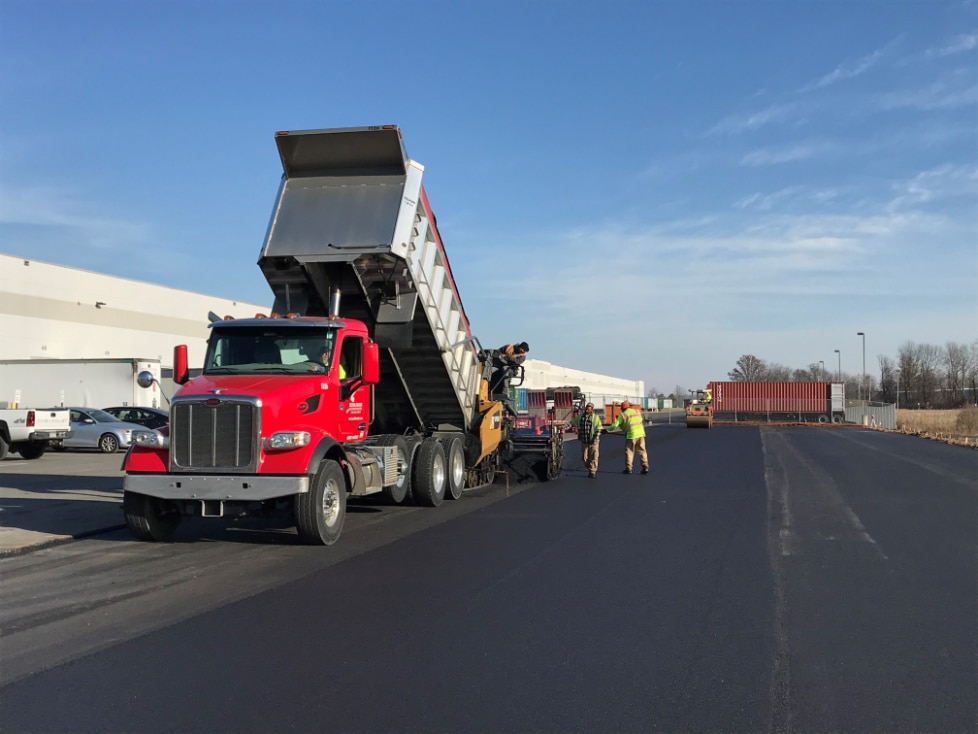
Bainbridge estimates that the average warehouse job requires between 20,000 and 40,000 tons of asphalt.
Bainbridge reminds us to watch for segregation as the subbase material is delivered and placed. “If the stone doesn’t have enough fines, or has too many, you won’t achieve the stability you need,” he said.
Another thing to watch out for on warehouse jobs is joint construction. “The team also needs to be very good at asphalt joint construction,” Powell said. “Because of the size of these paving areas, you’re talking about thousands of feet of joints.”
He stresses the importance of heated end gates to achieve quality joints. They also follow state DOT methods on their warehouse jobs to maximize joint quality. “The other thing is training,” he said, adding that Schlouch trains constantly. From when and how to rake the joint to how to compact the job, Powell said everyone has a role to play in quality.
Where the asphalt ties into the many concrete aprons located around warehouse jobs is also important. “The rollers have to get right up to the edge of the concrete,” King said, adding that it’s also important to keep the concrete free of track marks and material.
“At the end of the day, the client wants to look across their property and wants their blacktop to be black and their concrete to be white,” Powell said, highlighting the importance of meticulous cleaning and attention to detail.
That, too, is a matter of teamwork. “We’re all one team,” Powell said. “Our whole company rallies behind one another to make sure we deliver what we promised by the end of every day.”
